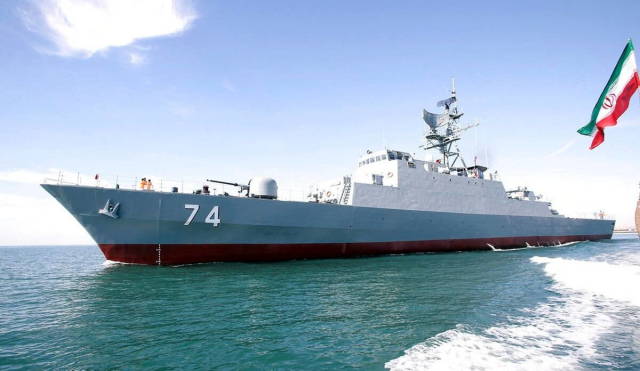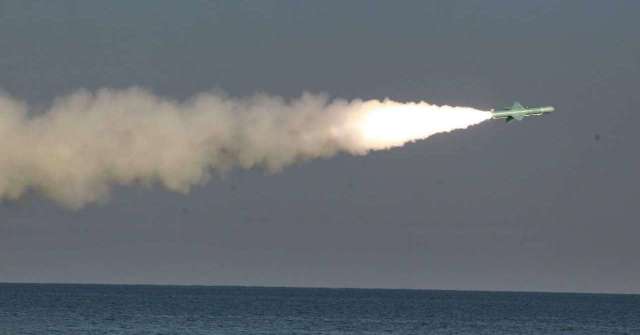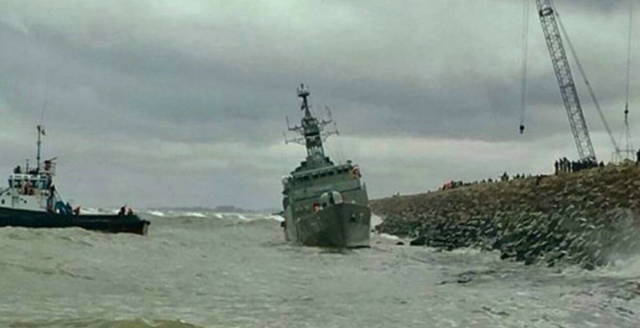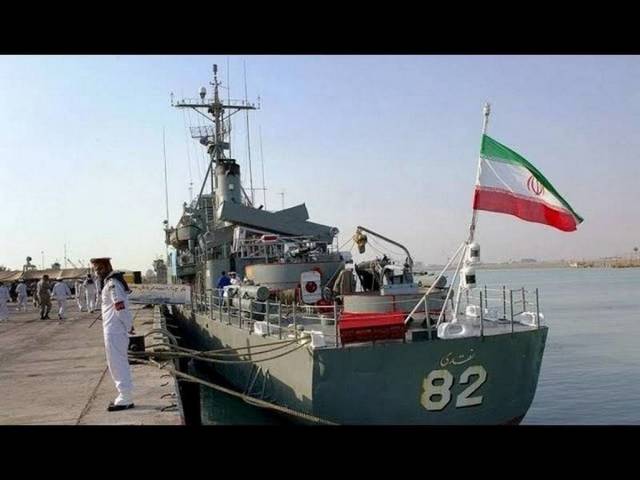According to us military publications from December 2019, the Iranian Navy is ready to deploy to the Atlantic ocean. Such a bold statement refers to the report presented in the same year by the us Department of defense Intelligence Agency "Iran's Military power". As noted by the authors of the document, missions assigned to Iranian ships are increasingly taking place outside their usual areas of responsibility.
For more than a decade, the Islamic Republic of Iran (IRI) Navy has maintained almost continuous deployments over long distances from home bases. These include exercises with the navies of other States, anti-piracy operations in the Gulf of Aden, and visits to foreign ports. Supporting this trend, in late February 2020, after a 25-day cruise, the 66th operational flotilla (or operational fleet) of the Iranian Navy arrived in Jakarta, Indonesia.

66th operational flotilla of the Iranian Navy arrives in Jakarta
If until recently, the activities of the Iranian Navy were linked to the fulfillment of their main task of protecting territorial waters and economic interests in the Caspian sea, the Persian and Oman bays, now this is changing. According to the assessment of RUMO analysts, long-term ambitions involve the transformation of the Iranian Navy from coastal defense to a system with the potential for action in the "open sea". In this regard, the symbolic visit to Jakarta largely supports the conclusion of the RUMO about the desire of the Iranian leadership to display the flag far beyond the Arabian sea.
It is obvious that achieving this status will require significant modernization of the fleet forces. Although the 66th operational flotilla showed the ability to cover significant distances, the ships that were part of it, the Corvette Bayandor (Bayandor 81) and the auxiliary ship Kharg (Kharg, tail number 431), were initially commissioned in 1964 and 1984, respectively. According to the RUMO, despite the inventory of mostly aging ships, the IRI Navy is "moderately efficient" and achieves large-scale operations, maintaining existing assets in operational readiness.
The report predicts that achieving the desired status of the Navy will require significant investment in modern combat and support ships. It is noted that the limited international sanctions shipbuilding industry and other defense industry of the Islamic Republic in recent years could provide a slow but continuous supply of Iranian Navy new ships and weapons systems of various classes.
The Iranian Navy is increasing the capabilities of the mouj frigates»
The largest class of warships that Iran is currently building are the moudge-type URO frigates. (It should be noted that the command of the Iranian Navy positions these ships as escort destroyers, and in accordance with the Western classification, they are more consistent with corvettes). The project is a local development of the British-built light frigates of the Alvand type, delivered to Iran in the 1970s. The next ship of the project "mouj" was commissioned into the fleet in December 2018. According to the state television of Iran, the Sahand frigate (Sahand, F 74) has a longer range and combat stability than the ships of the Alvand and mouj projects of earlier construction.

Uro Sahand F 74 type mouj frigate»
According to naval analyst Trevor HOLLINGSBEE, the Sahand frigate was built by Iran shipbuilding & Offshore Industries Complex Co. (ISOICO) in Bendar Abbas and differs from earlier designs by showing hidden characteristics. In particular, with a full displacement of 1,400 tons and a length of 96 m, the ship has four Pielstick diesel engines that provide it with a speed of up to 25 knots. With a crew of 140 people, the expert estimates the possibility of Autonomous actions of the Sahand without resupply at sea at five months.
The main armament of the "Sahand" is four anti-ship cruise missiles (RCC) "Noor" (Noor) or their modification "Gader" (Qader). The missiles are capable of hitting targets at a range of up to 200 km. The Chinese-made C-802 RCC served as a prototype for their development. The frigate's artillery systems include: a 76-mm Fajer-27 naval gun (Fajr-27, an unlicensed copy of the OTO Melera 76/62 Compact gun) located in the bow, a 40-mm fetal AU (Fetal, an unlicensed copy of the Bofors 40/70 automatic gun), and two 20-mm guns that are a reengineering of the Oerlikon GAM-BO1 model.

Launch of the Kader RCC"
The air defense system is limited to two Sayad-2 missile launchers (Sayad-2), developed on the basis of the American standard RIM-66 missile. Two 324-mm three-tube torpedo tubes are designed to combat submarines and allow the use of homing torpedoes of national production. It is assumed that the torpedoes are aimed at the ship's track and are the result of re-engineering of the American model Mk48. The frigate is equipped with Iranian air and surface control radars and, despite the lack of a hangar, can use one Agusta Bell 214 anti-submarine helicopter.
It should be noted that by the time the Sahand frigate (F 74) was commissioned into the Navy, the IRI fleet had only two mouj ships: Jamaran (Jamaran, F 76) and Damavand (Damavand, F 77). Moreover, the status of the latter was not determined at that time, since in January 2018, the ship was thrown by a storm on the breakwater of the Bender-Enzeli naval station (Caspian sea). US experts assessed the incident with the largest ship of the Iranian Navy in the Caspian sea as a serious blow to the program of modernization of the Iranian fleet.

Accident with the frigate "Damavand»
Designed for training purposes, Damavand was laid down in 2009 at the Shahid Tajdi shipyard, launched in 2013 and transferred to the Navy in 2014 (according to other sources in 2015). According to the commander of the Iranian Navy, rear Admiral Hossein Khanzadi, the frigate is planned to be repaired and rebuilt, equipped with a vertical launch system. At the same time, T. Hollingsby is skeptical of such declarations, pointing out that the Iranians have repeatedly declared the inevitable return of the Damavand to service. It should be noted that, despite the fact that, analyzing satellite images obtained by the US Navy, experts concluded that the frigate was completely lost, according to open sources, the restoration of the Damavand in Bender-Enzeli (and possibly the construction of a new ship) is still underway.
In November 2019, the commander of the Iranian Navy announced that a new mouj-class frigate, named dena (Dena, F 75), would be delivered in February 2020. At that time, no additional information was provided. More specifically, the situation with the new ship was explained by Admiral Amir Rastegari, head of the shipbuilding industry Organization under the Ministry of defense and support of the Iranian armed forces (MODAFL). According to his interview on April 4, 2020, published on the MODAFL website, the frigate "will join the Navy in the month of Bahman" (from January 20 to February 18, 2021). The ship is planned to install a vertical rocket launch system, an AFAR radar, a new communication system, and make significant changes to its propulsion system.
In addition, A. Restegari said that the Navy has requested another frigate of the project "mouj", but this application has not yet been approved. Western observers believe that the next ship will be an addition to the one being built on the Caspian sea and will replace the Damavand. In total, up to three new frigates of the mouj project are expected to be built.
To be continued …
Based on the materials of NAVAL FORCES magazine

